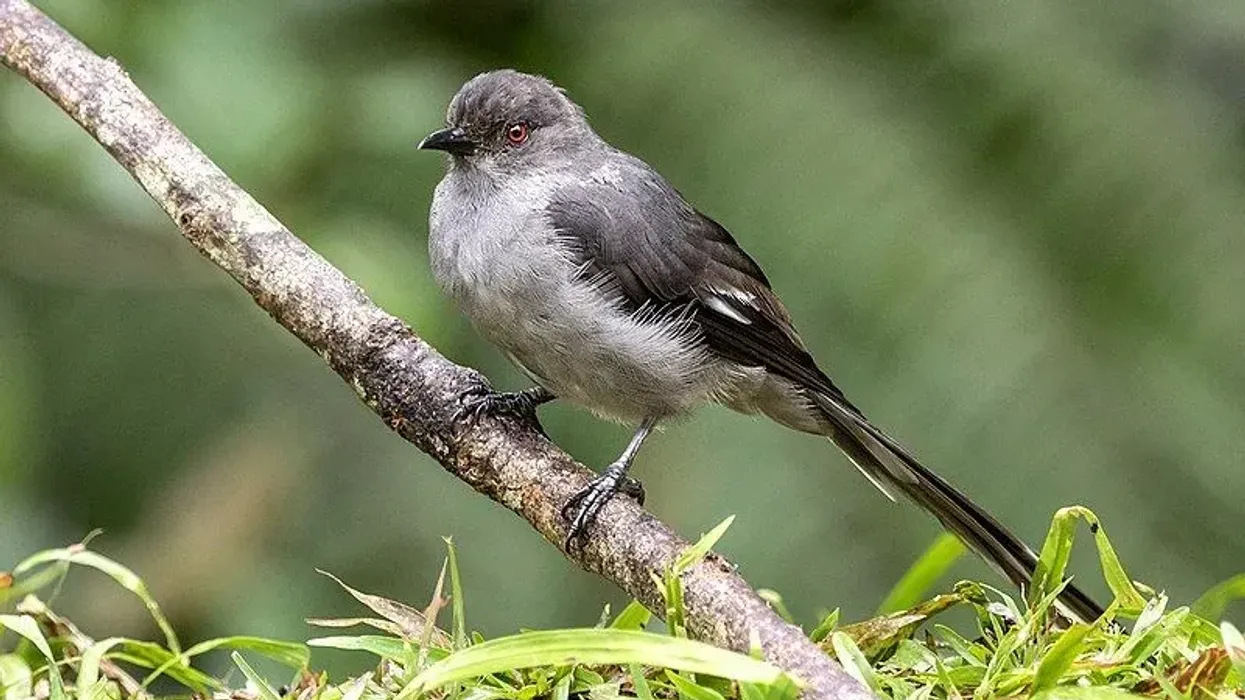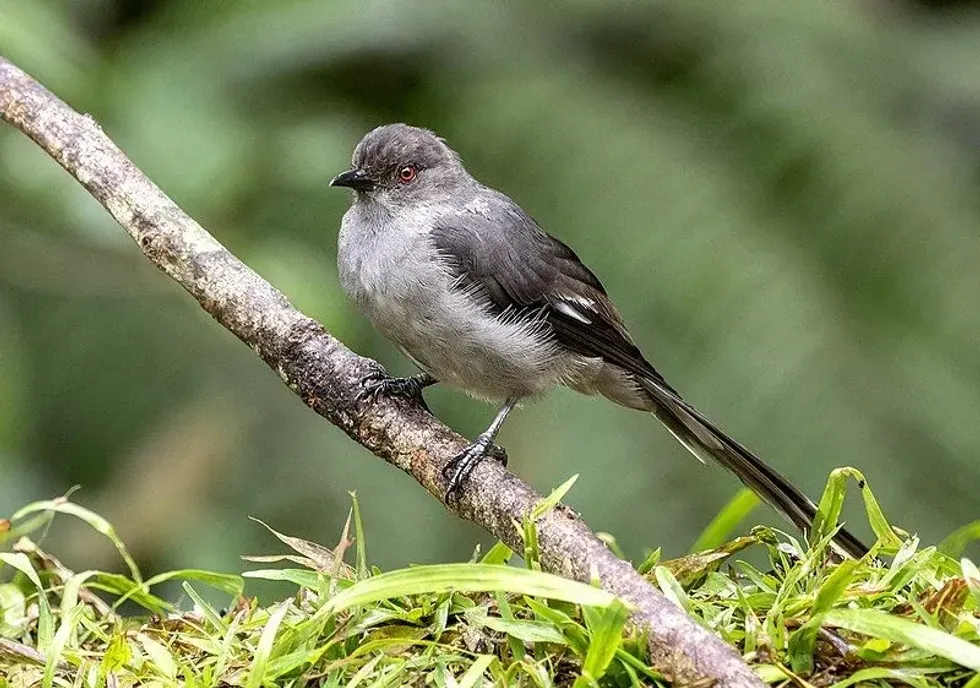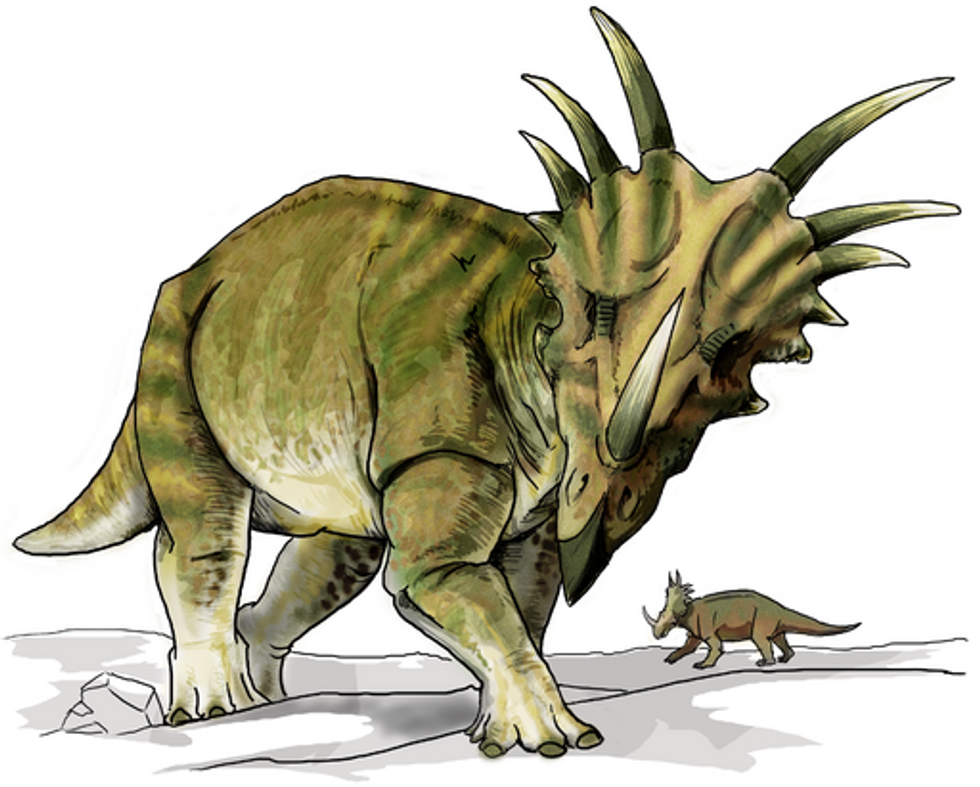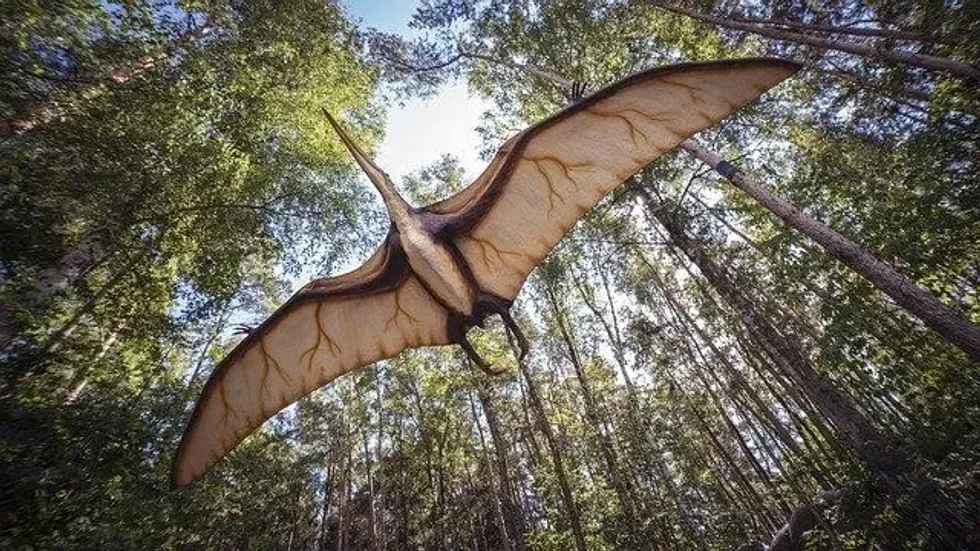A species of the Passeriformes order, family Leiothrichidae, and genus Heterophasia, the long-tailed sibia (Heterophasia picaoides) once belonged to the Timaliidae family (genus Malacias). These birds are generally gray and possess dark wings and tails.
Unlike other species of sibia, the long-tailed sibia has only one white patch near the wingtip. The species is known as Burung Sibia Ekor Panjang in Malay, Langstaartsibia in Dutch, and Sibia Colilarga in Spanish.
There are four subspecies of the long-tailed sibia (Heterophasia picaoides) bird: Heterophasia picaoides picaoides, Heterophasia picaoides cana, Heterophasia picaoides wrayi, and Heterophasia picaoides simillima. The species is primarily found in Southeast Asia but the geographical ranges of the subspecies vary.
The bird is found in Nepal, northeast India, China, and Bhutan, and it is also quite common in Malaysia, Laos, and Myanmar.
The long-tailed sibia (Heterophasia picaoides) bird is an omnivore that preys on invertebrates and fruits. The bird is found in evergreen forest habitats, oak and pine forests, and forest edge habitats. The International Union for Conservation of Nature listed the species in the Least Concern category and predation is considered as its only major threat.
Keep on reading to learn more interesting facts about the long-tailed sibia. If you want to know more exciting information about different animals, check out these bee-eater and cockatoo facts too.
Long-Tailed Sibia Interesting Facts
What type of animal is a long-tailed sibia?
The long-tailed sibia (Heterophasia picaoides) bird formerly belonged to the Timaliidae family (genus Malacias). The species is known as Burung Sibia Ekor Panjang in Malay, Langstaartsibia in Dutch, and Sibia Colilarga in Spanish.
What class of animal does a long-tailed sibia belong to?
The long-tailed sibia (Heterophasia picaoides) bird belongs to the Passeriformes order, family Leiothrichidae, and the Heterophasia genus. There are four subspecies of the long-tailed sibia (Heterophasia picaoides) bird: Heterophasia picaoides picaoides, Heterophasia picaoides cana, Heterophasia picaoides wrayi, and Heterophasia picaoides simillima.
How many long-tailed sibias are there in the world?
The exact population of the long-tailed sibia (Heterophasia picaoides) species is not known but data shows that the population is stable and the geographical range of the species is quite vast as well.
Where does a long-tailed sibia live?
The long-tailed sibia (Heterophasia picaoides) species range generally varies by subspecies. The typical Heterophasia picaoides picaoides range includes northeast India, Nepal, Bhutan, and northeast Myanmar, the Heterophasia picaoides cana species is found in southern Myanmar, north Thailand, and north China.
Species such as the Heterophasia picaoides wrayi the and Heterophasia picaoides simillima are found in the highlands of the Malay Peninsula and the highlands of western Sumatra respectively.
What is a long-tailed sibia's habitat?
A typical long-tailed sibia habitat generally includes evergreen forest habitats as well as oak and pine forests. Open hill forests, forest edges, and adjacent scrubby second growth also serve as their habitats.
Who do long-tailed sibias live with?
Very little information regarding their social behavior is available as of now but the long-tailed sibia (Heterophasia picaoides) bird generally lives in flocks or groups. During the breeding season, the species is seen in pairs.
How long does a long-tailed sibia live?
The exact lifespan of the long-tailed sibia (Heterophasia picaoides) bird is not known but some species of the Leiothrichidae family generally live for around 15 years in the wild. Data also reveals that the lifespan of the bird generally increases if kept in captivity.
How do they reproduce?
Very little information regarding the reproduction patterns of the long-tailed sibia (Heterophasia picaoides) species is known as of now but it is said that the bird generally follows the same methods as other species of the Passeriformes order, family Leiothrichidae.
Also, the breeding methods of the Heterophasia picaoides picaoides, Heterophasia picaoides cana, Heterophasia picaoides wrayi, and Heterophasia picaoides simillima are the same.
Before breeding, the long-tailed sibia male and female are involved in several courtship displays. The long-tailed sibia female constructs the nest and lays eggs, but the average litter size is not known. Male birds are quite protective of female birds, eggs, and the nesting site.
What is their conservation status?
The International Union for Conservation of Nature listed the long-tailed sibia (Heterophasia picaoides) bird in the Least Concern category and predation is considered as their only major threat.
Long-Tailed Sibia Fun Facts
What do long-tailed sibias look like?
The bird is generally gray and possesses dark wings and a tail. Unlike other species of sibia, the long-tailed sibia (Heterophasia picaoides) has only one white patch near the wingtip. The species is known as Burung Sibia Ekor Panjang in Malay, Langstaartsibia in Dutch, and Sibia Colilarga in Spanish.
How cute are they?
The long-tailed sibia (Heterophasia picaoides) is one of the most fascinating birds of the Leiothrichidae family. As the name suggests, the species is known for its long and beautiful tail.
Anyone is lucky to get a glimpse of the bird in the pleasant landscapes of northeast India. Also, long-tailed sibia feathers are super cute too as they, and other species of the Timaliidae family, are known for their soft fluffy plumage.
How do they communicate?
Like other species of the Leiothrichidae family, the long-tailed sibia (Heterophasia picaoides) bird follows the same methods of communication. The bird uses calls to find other members of its flock or to indicate danger.
Also, the Heterophasia picaoides wrayi bird performs several courtship displays. These birds generally search for their food on the ground quite vigilantly. Visual and tactile cues are a few other common methods of communication.
How big is a long-tailed sibia?
The long-tailed sibia (Heterophasia picaoides) weighs around 0.08-0.10 lb (40-46 g) while the bird is 11.81-13.77 in (30-35 cm) long. The bird is twice the size of the fox sparrow and the chipping sparrow.
How fast can a long-tailed sibia fly?
The exact speed of long-tailed sibia birds is not known but they are known for their amazing predatory skills. They become quite vigilant when they search for food and while avoiding predation.
How much does a long-tailed sibia weigh?
The long-tailed sibia bird is quite small and it weighs around 0.08-0.10 lb (40-46 g).
What are their male and female names of the species?
There are no specific names given to male and female long-tailed sibia birds. Also, there is no information regarding the sexual dimorphism of this species.
What would you call a baby long-tailed sibia?
Like other juveniles of the Passeriformes order, the baby of a long-tailed sibia is known as a chick.
What do they eat?
Like other members of the Leiothrichidae family, the average long-tailed sibia diet mainly includes fruits and invertebrates such as snails and worms. These birds generally search for food around their habitat only.
Are they dangerous?
Generally, long-tailed sibia birds are not dangerous and they prefer to not live around humans. If someone tries to provoke or harm them, they may attack though, and they do possess sharp bills.
Would they make a good pet?
Proper care in captivity generally increases the lifespan of these birds, but owners mustn't forget to do proper research regarding their living patterns, food habits, and other things before keeping them as pets.
Did you know...
Unlike most members of the Leiothrichidae family, this bird possesses a small head and a long tail. Thanks to this long tail, the species is known as a long-tailed sibia, and these birds can be identified by this iconic long tail.
Are long-tailed sibias endangered?
No, the International Union for Conservation of Nature listed the long-tailed bird in the Least Concern category and the species is not facing any major threats apart from predation. Also, the population of these birds is said to be stable as of now.
Threats such as a loss of habitat and climate change could affect the species in the future.
Do long-tailed sibias migrate?
No information regarding long-tailed sibia migration is available as of now but the species is known to inhabit the Himalayas and Southeast Asia. The long-tailed sibia species consists of four subspecies and their ranges vary.
The Heterophasia picaoides picaoides range includes northeast India, Nepal, Bhutan, and northeast Myanmar, the Heterophasia picaoides cana species is found in southern Myanmar, north Thailand, and north China. Species such as Heterophasia picaoides wrayi and Heterophasia picaoides simillima are found in the highlands of the Malay Peninsula and the highlands of western Sumatra respectively.
Here at Kidadl, we have carefully created lots of interesting family-friendly animal facts for everyone to discover! Learn more about some other birds from our Amazon parrot facts and Anna's hummingbird facts pages.
You can even occupy yourself at home by coloring in one of our free printable Long tailed sibia coloring pages.









